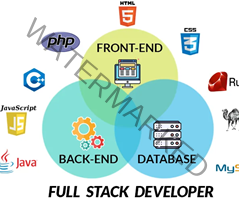
When creating content for full stack development on a website, it is important to provide a comprehensive overview of the skills, technologies, and methodologies involved in this field. Highlight the role of a full stack developer in handling both front-end and back-end development tasks, including designing user interfaces, implementing server-side logic, and managing databases.
Include information on popular programming languages, frameworks, and tools commonly used in full stack development, such as JavaScript, Node.js, React, Angular, Python, Django, Ruby on Rails, and more. Discuss the importance of understanding both client-side and server-side technologies to build scalable and efficient web applications.
Additionally, showcase the benefits of being a full stack developer, such as versatility, problem-solving skills, and the ability to work on end-to-end projects. Provide resources for learning full stack development, including online courses, tutorials, and communities where aspiring developers can enhance their skills and stay updated on industry trends.
By offering valuable insights and resources on full stack development, you can attract aspiring developers, showcase your expertise in the field, and position your website as a go-to destination for individuals interested in pursuing a career in full stack development.
